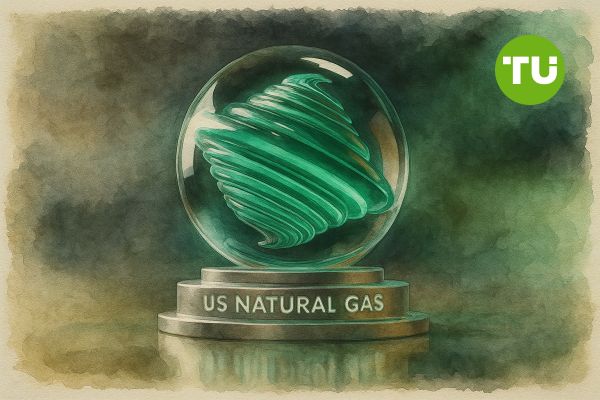U.S. natural gas price breaks below $3.625 as heatwave fails to offset bearish momentum
 European natural gas drops over 10% to €36.3 after Iran-Israel truce; U.S. gas breaks below $3.625
European natural gas drops over 10% to €36.3 after Iran-Israel truce; U.S. gas breaks below $3.625
European natural gas futures slumped more than 10% on Tuesday to €36.3 per megawatt-hour, the lowest in over a week, after U.S. President Donald Trump announced a ceasefire between Iran and Israel. Under the agreement, Iran is to halt hostilities immediately, with Israel to follow 12 hours later.
Highlights
- European gas prices plunge 10% to €36.3/MWh after Trump-brokered ceasefire announcement
- U.S. natural gas drops below $3.625, breaks key EMAs and trend structure amid bearish momentum
- Heatwave across southern Europe may limit downside as cooling demand rises this week
If sustained, the truce will formally end nearly two weeks of military escalation, alleviating fears of disruption through the Strait of Hormuz, a critical passageway for global LNG flows.
Meanwhile, meteorological forecasts show a mixed weather picture across Europe. A heatwave is sweeping through southern and western parts of the continent, with temperatures reaching 40°C in Madrid and 36°C in Zagreb, likely boosting electricity usage for cooling. However, cooler and stormy conditions are expected in the Nordics and eastern Europe due to a low-pressure system stretching from Germany to the Baltics.
U.S. gas breaks trend support
In the U.S. market, natural gas futures declined sharply to $3.625, breaking below both the ascending channel and major moving averages. A strong bearish engulfing candle at $4.10 triggered the sell-off, followed by successive red candles, confirming heavy downward pressure. The breakdown below the 50-day EMA at $3.813 and the 200-day EMA at $3.725 underscores the weakness in the current structure.

Natural gas price dynamics (Source: TradingView)
Technical indicators provide little encouragement for bulls. Price is now sitting on thin support at $3.622, with the next key level at $3.550. Reclaiming the green pivot point at $3.717 remains essential to neutralize the bearish bias. Without a close above $3.788, upside momentum is unlikely to resume.
In previous coverage, we discussed the increasing sensitivity of natural gas prices to geopolitical flashpoints, especially those involving Iran and LNG chokepoints. Today’s sharp drop reinforces that dynamic while also illustrating how quickly technical structures can unravel under geopolitical shifts.













































































































































